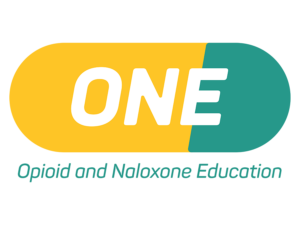Opioid and other drug-related toxicities continue to plague us. Individuals who are or recently were incarcerated are at very high risk of drug diversion, medication nonadherence, drug misuse and overdose upon their release. The ONE (the opioid and naloxone education) Program can help.
Article submitted by: Amy Werremeyer, PharmD, BCPP
Chair and Professor | Pharmacy Practice Department
NDSU School of Pharmacy; College of Health Professions | ONE program
Amy.werremeyer@ndsu.edu
The overdose death rate in North Dakota increased from 0.98 per 10,000 in 2019 to 1.44 per 10,000 in 2023, which is a 48% increase during that five-year time period. On average, 2 North Dakotans die each week from an unintentional drug overdose.
Individuals who are incarcerated are at very high risk of drug diversion, medication nonadherence, opioid misuse and overdose upon their release. Naloxone, an opioid antagonist and overdose reversal agent can help to prevent death when dangerous opioid exposure has occurred. However, even when incarcerated individuals are offered no-cost naloxone, many have declined it. Individuals who are incarcerated may also have higher rates of medication nonadherence and/or unsafe medication disposal upon their release. An overview of the ONE Program screening process for persons who are incarcerated can be reviewed here: Corrections – (one-program.org).
The ONE Program screening approach and associated tools have been piloted in 2 correctional settings in ND. This involves use of a standardized screening tool that is administered to all incarcerated individuals as a part of their normal health assessment in the corrections setting, typically within 14 days of admission into the corrections facility.
Screening for risk of opioid misuse and overdose as well as for signs of drug diversion and medication non-adherence using the ONE Program has led to:
- Improved education that is tailored to an incarcerated individual’s specific risk
- Increased acceptance of naloxone by incarcerated individuals at the time of release
- 14 of 19 (74%) incarcerated persons accepted naloxone in our pilot
- Take-home medication safety tools for incarcerated individuals to use after release
 The ONE Program medication safety tools distributed in the correctional setting pilot include (pictured to the right):
The ONE Program medication safety tools distributed in the correctional setting pilot include (pictured to the right):
- A medication lock box/bag
- A pill organizer
- A method of safe medication disposal (Deterra)
- Naloxone (provided by the public health unit’s state-allotted naloxone)
- Educational materials
There are additional opportunities for this work to expand into other counties and correctional settings. If you have interest in hearing more, please contact us! ONE (Opioid and Naloxone Education) is an innovative approach to screen and educate patients who receive prescribed opioid medications at participating community pharmacies in the state of North Dakota. Learn more.



